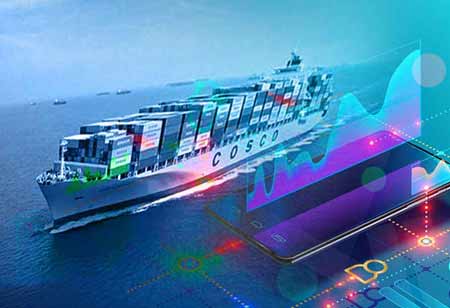THANK YOU FOR SUBSCRIBING
THANK YOU FOR SUBSCRIBING

By
Logistics Transportation Review | Monday, September 05, 2022
Stay ahead of the industry with exclusive feature stories on the top companies, expert insights and the latest news delivered straight to your inbox. Subscribe today.
The development of logistics software is changing, and today's businesses deploy features and software that wasn't available or even feasible in the past.
FREMONT, CA: The development of logistics software provides organisations with tools and functionalities that were previously unavailable. By observing the logistics trends in 2022, companies can discover new strategies to succeed. Individual businesses need to improve their efficiency, and they need to keep abreast of market developments and understand why logistics companies tend to favour specific trends over others. Some developments in the logistics sector have gained popularity in recent years and continue to support businesses in enhancing their offerings.
Digital Twins and General Process Digitisation
An organisation's workflow becomes quicker and more efficient when more operations are digitised, as automation and optimisation help reduce costs and time. One of the significant trends for 2022 is the use of digital twin technology to create a replica of a real thing, like a structure or product, as well as a copy of a process to test it, find any problems, or prevent operational delays in the future. For example, gathering product and packing information may improve shipment protection.
Technology can also significantly improve design and performance by building 3D models to support infrastructure and test layout changes. To develop a dynamic delivery network, a solution like a multi-modal transportation management system can assist businesses in obtaining real-time information on the status of the vehicle, traffic, and other factors.
Real-Time Supply Chain Visibility and IoT
Real-time data is needed by both customers and carriers. A customer wants to know the location of the items ordered, while a driver needs to know how they can deliver the item securely and swiftly or whether they can make another delivery. Numerous logistics software development services and products let companies use cloud services and IoT sensor technologies and connect all tracking devices to a single monitoring system. The delivery management system is one instance used to analyse market innovations.
Driver Retention and Autonomous Vehicles
When a supply chain lacks a driver, it fails. As a result, it's essential to have control over the trucks and drivers, as well as to be aware of how much inventory the company can produce and whether those numbers can drop due to a shortage of staff or other resources. In this circumstance, businesses can significantly benefit from driver assistance programmes and GPS vehicle monitoring systems. If companies do not have their app or do not want to use third-party ones, they can opt for outsourcing to build logistics software for their organisation, considering specifications and optimisation strategies. Organisations can be sure that they will receive fully functional logistics management. Many businesses are testing autonomous cars and systems such as drones, sensors, self-driving trucks, artificial intelligence (AI), and other autonomous vehicles to see if they can increase service and efficiency.
Eco-Friendly Solutions and Greener Logistics Operations
Utilising environmentally friendly solutions can help logistics companies stand out from those mired in the past. Customers like brands that reflect their values because the bulk of supply chain operations affect the environment. Businesses will be able to recycle and reduce trash where it makes sense, and consumers will be satisfied with their choices and contribute more. It is also possible to lessen the overall environmental impact of the packing materials used.
Electric delivery solutions have begun to replace outdated fossil-fuel-powered vehicles, in addition to self-driving cars. Most businesses now sort and pack delivery items using robots in warehouses. Since robots can also work in any circumstance as they can reduce labour costs, reduce human touch and interaction, and reduce power usage. The infrastructure and supply chain is optimised due to all these innovations. To make warehouses greener, businesses can also employ solar panels, drought-tolerant plants, and low-emitting paint.
Blockchain
Although many customers associate this word with cryptocurrency and respond to it sceptically or unfavourably, the technology has several other applications and not all drawbacks. Regarding logistics, blockchain facilitates the management of the complete supply chain from production to consumer. Customers may trace the product to the database's storage of all its information, including the lot number, expiration and shipment dates, manufacturer, etc. In addition, it speeds up delivery, lowers error rates, and securely verifies document transactions. While some logistics firms are already utilising it successfully and providing their customers with the greatest service, many are unsure.
I agree We use cookies on this website to enhance your user experience. By clicking any link on this page you are giving your consent for us to set cookies. More info





